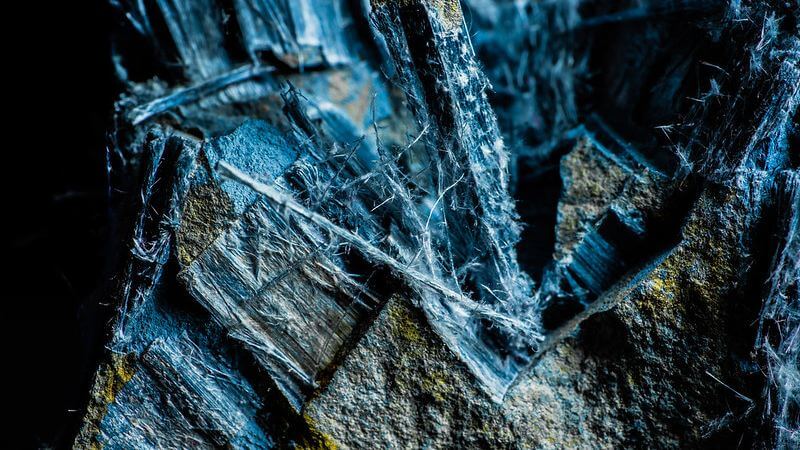
Blue Asbestos: Understanding Its Risks and Fibrous Nature

As one of the most hazardous materials known to humans, blue asbestos has gained significant attention in recent decades due to its health risks and widespread industrial use. Understanding the nature of blue asbestos, often referred to as crocidolite, is crucial for individuals working in industries where this mineral may be present. This article delves into the fibrous nature, composition, and the various risks associated with blue asbestos exposure, providing readers with the essential knowledge to stay informed.
Crocidolite, while being one of the lesser-used forms of asbestos, poses serious threats, particularly in older buildings and industrial sites. In this comprehensive analysis, we will explore the characteristics, historical usage, potential health risks, and regulations concerning blue asbestos, equipping you with the information necessary to identify and mitigate these hazards effectively.
What is Blue Asbestos?
Blue asbestos, scientifically known as crocidolite, is a type of amphibole asbestos. It is primarily composed of sodium, iron, and magnesium silicate and is characterized by its distinctive blue, gray, or leek-green coloration. Unlike chrysotile asbestos, which is serpentine in nature, crocidolite has a more fibrous structure and is known for its exceptional tensile strength. However, it is less heat-resistant and can melt into a black glass at lower temperatures. The unique properties of blue asbestos make it a material of concern, particularly in industrial and construction settings.
The Composition and Properties of Crocidolite
Crocidolite consists of long, thin fibers that are easily airborne and can be inhaled, leading to serious health risks. Its fibrous nature allows it to be woven into products and materials, enhancing their strength and durability. Although the tensile strength of blue asbestos is significant, making it suitable for certain applications, its lower heat resistance compared to other forms of asbestos raises alarms among health and safety professionals. The physical properties of crocidolite play a critical role in its application and the dangers associated with its use.
Sources and Occurrences of Blue Asbestos
The primary source of blue asbestos is found in South Africa, where it occurs in significant quantities within ironstone deposits. Other notable occurrences are found in Australia and Bolivia, where crocidolite was historically mined for its unique properties. These regions have been instrumental in the production of crocidolite, leading to its widespread distribution in various industrial applications. Understanding the sources and occurrences of blue asbestos is essential for identifying potential exposure risks in geographic locations.
Health Risks Associated with Blue Asbestos Exposure
Exposure to blue asbestos is recognized as a severe health hazard. Inhalation of crocidolite fibers can lead to respiratory diseases such as asbestosis, lung cancer, and mesothelioma, a rare but aggressive cancer linked to asbestos exposure. The risk of disease increases with the duration and intensity of exposure, making awareness and preventive measures crucial. Symptoms of asbestos-related diseases may not appear until decades after exposure, which complicates diagnosis and treatment. It is vital to take precautions seriously when working in environments where blue asbestos may be present.
Blue Asbestos vs. Other Types of Asbestos
In comparison to other types of asbestos, blue asbestos has unique properties that differentiate it from chrysotile and amosite asbestos. While all forms of asbestos can pose health risks, crocidolite is particularly notorious for its high tensile strength and propensity to become airborne. Chrysotile asbestos, often referred to as white asbestos, is the most commonly used type but is not as fibrous or hazardous as crocidolite. This section examines the contrasts between these types of asbestos, highlighting the significance of blue asbestos in terms of health risks and usage.
Historical Use and Industrial Applications
Blue asbestos has historically been used in various industrial applications due to its robust and durable fibers. It was commonly utilized in shipbuilding, insulation materials, automotive components, and building materials like tiles and cement. As industries sought to enhance the strength and fire resistance of their products, crocidolite became a favored choice, unknowingly exposing workers and consumers to its dangers. This historical context serves to illustrate the extent of blue asbestos use and the long-lasting ramifications of its application.
Regulations and Mitigation of Blue Asbestos Hazards
Recognizing the risks associated with blue asbestos, many countries have instituted regulations to mitigate exposure. Legislation often requires the careful handling and disposal of asbestos materials, including crocidolite, to safeguard public health. Awareness programs and safety training for workers in industries where blue asbestos is present are crucial for reducing the risk of exposure. This section will discuss the regulations surrounding blue asbestos and the importance of compliance in workplaces.
Conclusion: Staying Informed about Blue Asbestos Risks
In conclusion, knowledge about blue asbestos and its associated risks is essential for anyone involved in industries where it may be present. By understanding its properties, historical usage, health risks, and regulatory measures, individuals can take proactive steps to ensure safety and compliance. Staying informed about blue asbestos is not only a legal obligation but also a moral one, safeguarding our health and that of future generations.
Did you find this article helpful? Blue Asbestos: Understanding Its Risks and Fibrous Nature See more here Education.
Leave a Reply






Related posts